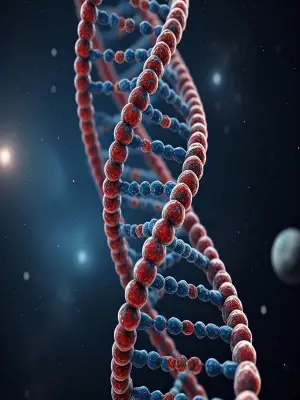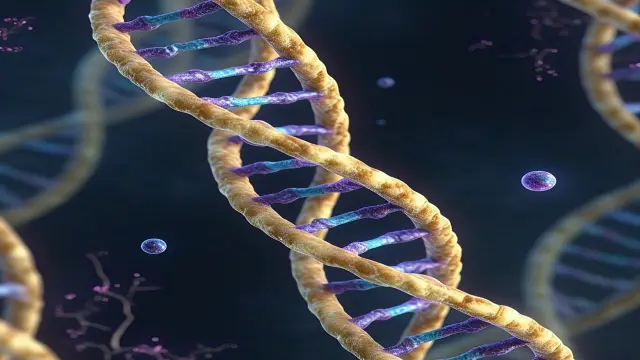Every year on April 25, the United States celebrates National DNA Day. This special day honours the discovery of DNA’s double-helix structure and the completion of the Human Genome Project. It’s a time to reflect on how far we’ve come in understanding the building blocks of life and how DNA research continues to shape our world.
What is DNA?
DNA, or deoxyribonucleic acid, is the molecule that carries the genetic instructions for all living organisms. Think of it as a blueprint for life. Every cell in your body contains DNA, tightly coiled into structures called chromosomes. These chromosomes hold the information that determines everything from your eye colour to your height.
The story of DNA begins with Gregor Mendel, a scientist and monk who first proposed the idea of genes in the 19th century. Mendel’s work with pea plants laid the foundation for modern genetics. However, it wasn’t until the 20th century that scientists uncovered the true structure of DNA.
The Discovery of the Double Helix
In 1953, James Watson and Francis Crick made one of the most significant scientific breakthroughs of the 20th century. They discovered that DNA has a double-helix structure. Imagine a twisted ladder: the sides are made of sugar and phosphate molecules, while the rungs are pairs of nitrogenous bases.

This discovery revolutionised biology. It explained how DNA replicates and how genetic information is passed from one generation to the next. Watson and Crick’s work earned them a Nobel Prize and paved the way for decades of genetic research.
The Human Genome Project
One of the most ambitious scientific endeavours in history was the Human Genome Project. Launched in 1990, this international effort aimed to map all the genes in the human genome. After 13 years of work, the project was completed in 2003.
The Human Genome Project identified approximately 20,000 to 25,000 genes in humans. It also provided insights into how these genes function and interact. This monumental achievement has had far-reaching implications for medicine, biology, and technology.
Advances in DNA Research
Since the completion of the Human Genome Project, DNA research has made incredible strides. Here are some of the most exciting developments:
1. Sequencing Extinct Species
Scientists have sequenced the DNA of extinct animals like the woolly mammoth and mastodon. These discoveries help us understand evolution and the relationships between species.
2. Evolutionary Insights
DNA studies have provided strong evidence for evolution. They align with findings from fossils and the geographical distribution of species. This has deepened our understanding of how life on Earth has changed over millions of years.
3. Genetic Engineering
Advances in DNA technology have opened the door to genetic engineering. Scientists are exploring ways to correct genetic defects before birth and develop treatments for diseases like cancer.
4. Solving Crimes
DNA evidence has become a powerful tool in criminal investigations. It has helped solve cold cases and exonerate individuals wrongly convicted of crimes.
5. Advances in Computing
DNA sequencing has driven progress in computer science. This has led to better search engines, more engaging video games, and improved data storage solutions.
6. DNA Nanotechnology
Researchers are using DNA to create tiny structures and machines. This emerging field, known as DNA nanotechnology, could revolutionise industries like medicine and electronics.
7. Historical and Archaeological Insights
DNA has transformed fields like history, archaeology, and genealogy. It has helped trace human migration patterns, identify ancient remains, and uncover family histories.
The Future of DNA Research
The possibilities for DNA research are endless. Scientists are exploring ways to use DNA to treat diseases, improve crop yields, and even combat climate change. As technology advances, we can expect even more groundbreaking discoveries.
One area of particular interest is personalised medicine. By analysing an individual’s DNA, doctors can tailor treatments to their unique genetic makeup. This could lead to more effective therapies and fewer side effects.
Another exciting frontier is synthetic biology. Scientists are working to create artificial DNA and organisms with custom-designed traits. This could have applications in medicine, agriculture, and environmental conservation.
Why National DNA Day Matters
National DNA Day is more than just a celebration of scientific achievement. It’s an opportunity to educate the public about the importance of DNA research. It also inspires the next generation of scientists to explore the mysteries of genetics.
By understanding DNA, we gain insights into who we are and where we come from. We also unlock the potential to improve our health, protect the environment, and shape the future.
Final Thoughts
National DNA Day is a reminder of how far we’ve come in understanding the blueprint of life. From Mendel’s peas to Watson and Crick’s double helix, the journey of DNA discovery has been remarkable. Today, DNA research continues to transform our world, offering hope and solutions to some of humanity’s greatest challenges.
As we celebrate this special day, let’s appreciate the scientists who have dedicated their lives to unlocking the secrets of DNA. And let’s look forward to the incredible discoveries yet to come.
Call to Action:
Want to learn more about DNA? Explore online resources, visit a science museum, or participate in a National DNA Day event near you. The world of genetics is waiting to be discovered!

